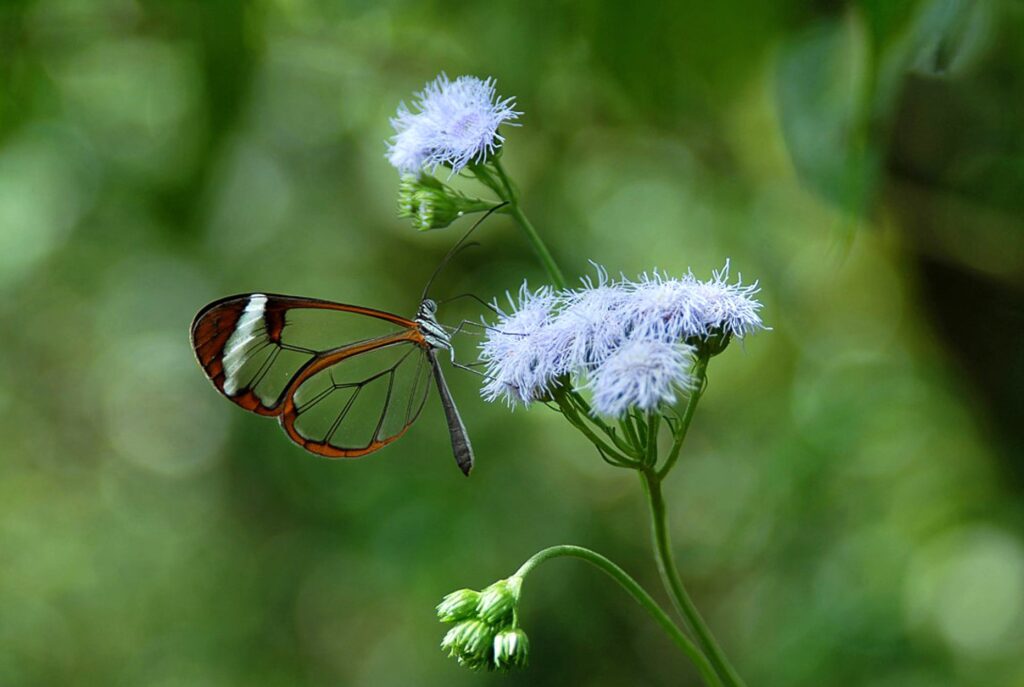Scientists Study Butterflies With Transparent Wings To Help Them Camouflage From Predators
This is the moment a butterfly that keeps out of sight from predators thanks to its transparent wings lands on a damp leaf in a South American rainforest to rest and have a drink of water.
The footage was captured by Aaron Pomerantz, a member of a team of researchers from the Marine Biological Laboratory (MBL) who have been studying these insects to understand how they grow their ‘invisible’ wings.
The Greta oto or ‘Glasswing butterfly’ is primarily found in central and northern parts of South America where Spanish-speaking locals call them ‘espejitos’ which translates to English as ‘little mirrors’.

Aaron Pomerantz, the lead author, said in a statement obtained by Newsflash that although transparent organs are well-documented in aquatic animals, they are very rare among land animals.
He added: “So we asked the question, what is the actual developmental basis of how they create their transparent wings?”
According to Pomerantz, the colouration of butterfly wings has been heavily studied but there is very little research into how some species are able to grow invisible wings.

The researchers used scanning electron microscopy to construct a developmental timescale of how transparency emerges in Glasswing butterflies to monitoring the process from pupal stage to adulthood.
They found that the Glasswing butterfly develops wings in a very different way from traditional species.
The scales that give colour to the wings of most butterflies are far less dense in the wings of the Greta oto, which have thin bristle-like scales instead.

Nipam Patel, MBL Director and the paper’s co-author, said: “What Greta oto does is to make fewer scales and to make them in these very different, bristle-like shapes.”
Patel added: “But getting the scales out of the way is only part of the problem of creating transparency.”
The team found that the butterflies have developed anti-glare nanostructures on their wings and when light hits these nanostructures, it goes straight through and doesn’t reflect.

They discovered another key component to the wings’ transparency, a layer of waxy hydrocarbon nanopillars.
Pomerantz said that they carried out several experiments that measured the amount of light reflected off the wings and found that the layer of waxy hydrocarbon nanopillars is a crucial part of the camouflage system.
Pomerantz concluded by saying that future research will go into more detail as to how these structures evolved over time.

He added: “If we can learn more about how nature creates new types of nanostructures, it could be very informative for human applications.”



